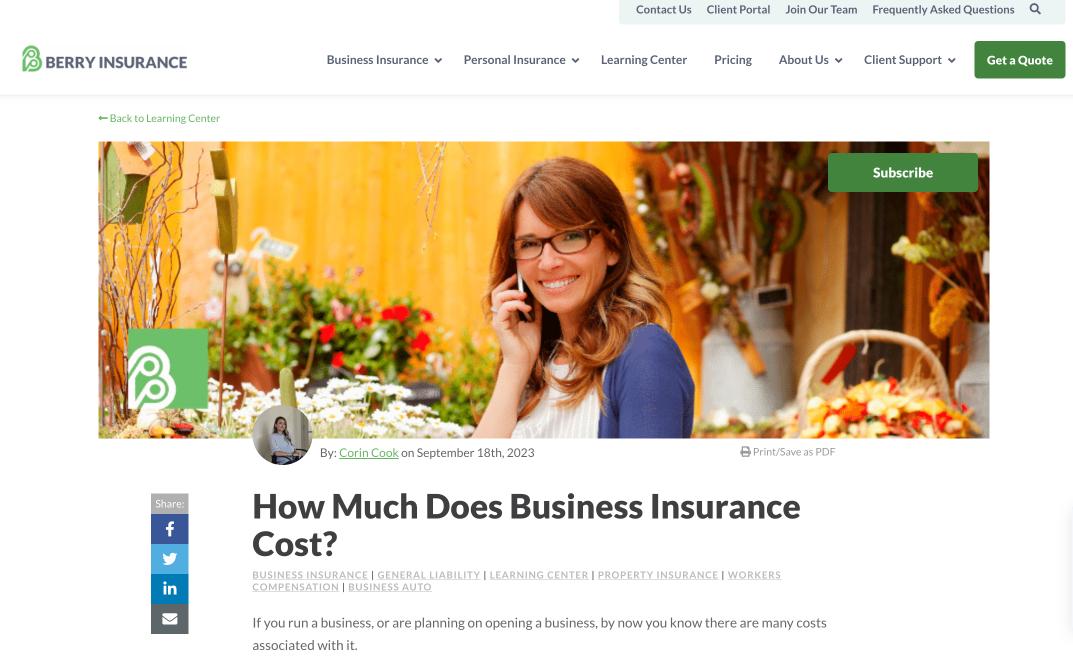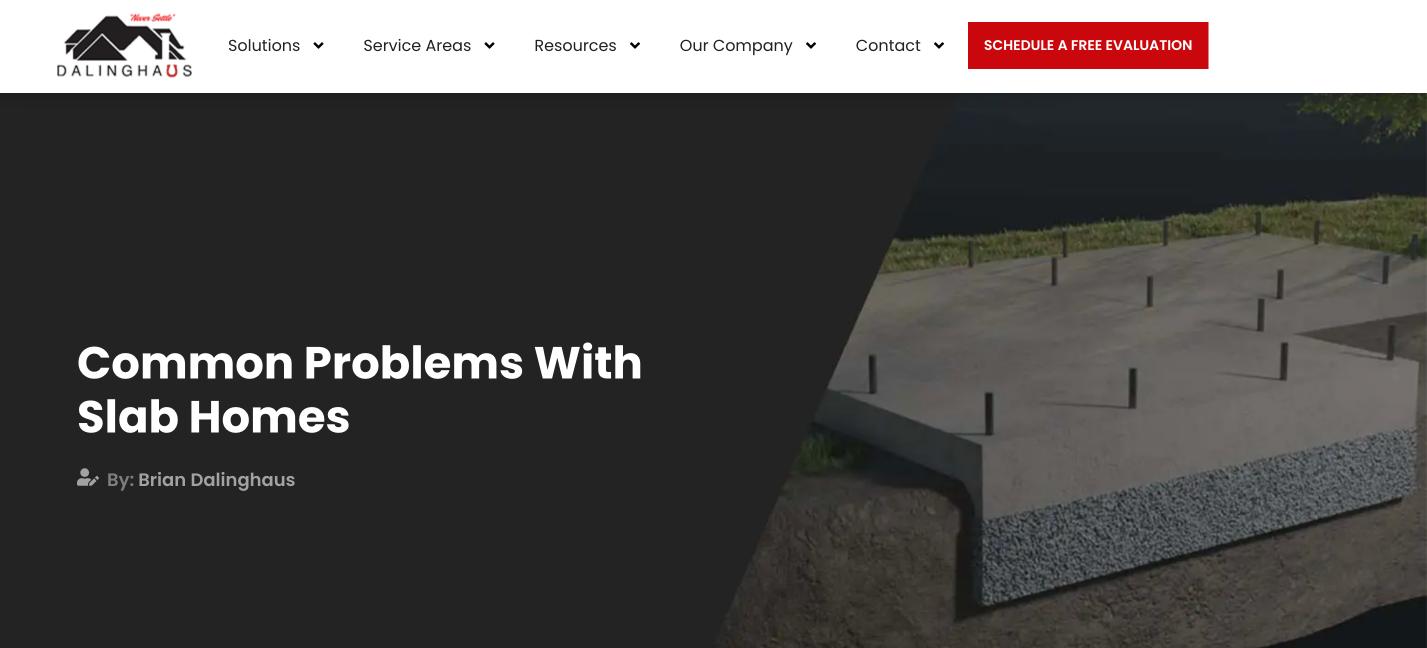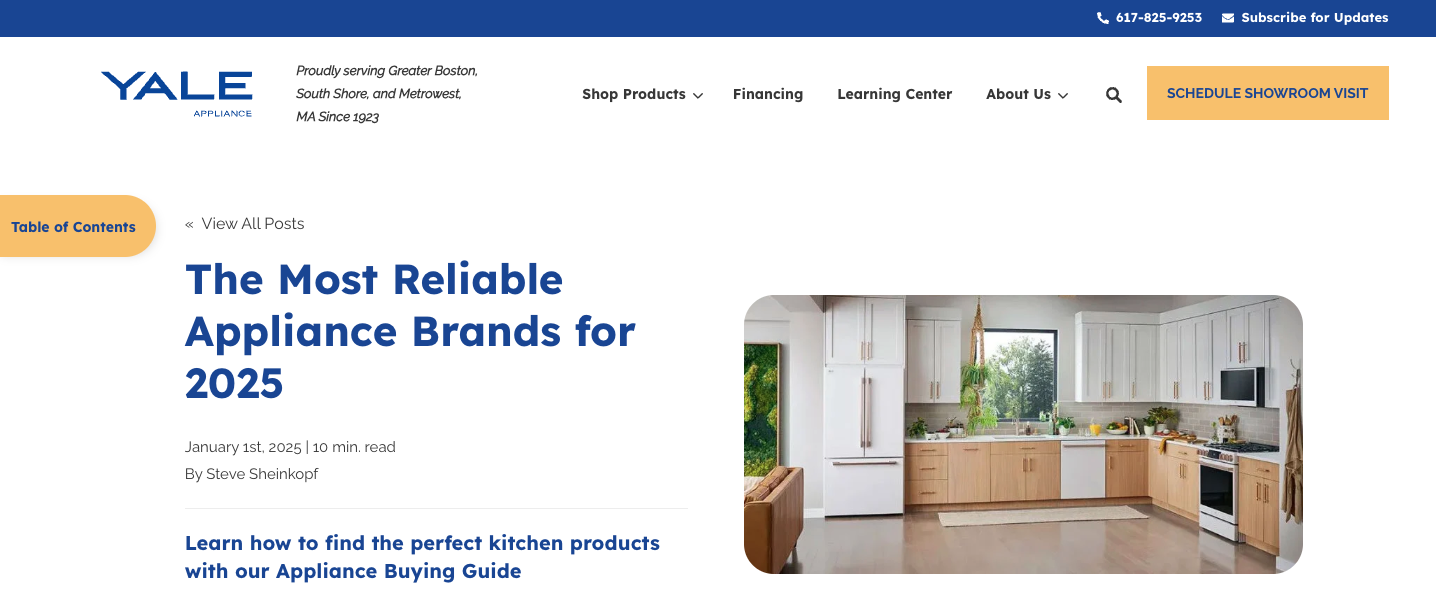Subscribe now and get the latest podcast releases delivered straight to your inbox.
What is The Big 5™ and Why Does It Work?

Mar 10, 2025
Best business blog topics
- Explain cost and pricing — and what factors make those numbers go up or down.
- Be open about the problems, shortcomings, and drawbacks of what you sell.
- Compare several products or services so the buyer can understand the differences.
- Produce "Best of" lists that cover best in class, best practices, and more.
- Create (or collect) helpful reviews from experts and past customers.
Listen on
View the full transcription of this episode.
__
Aruoture Oddiri: Emeka, it's a pleasure. Thank you, guys, for having me. You guys are doing some great work with your Pod at PwC.
Host: Thank you. Thank you. That's what the PwC experience is all about. Maybe I'll start by saying I'm a big fan of your work. And it's a big honour sitting here with you. And I'll just ask, how does it feel to be interviewed? You know you’re always the one doing the interview, how does it feel?
Aruoture Oddiri: So yeah, I know. It’s a bit surreal. ‘Cause I'm on the other side. But, look, I'm humbled that you guys watch the show. We have a responsibility to the public to give them the news as it happens, to be factual and balanced. And so, it's great to be here.
Host: Absolutely, and you guys are doing such a great job.
Aruoture Oddiri: Thank you.
Host: So let's talk with some background. For those who may not be familiar with you, Mr Arouture, can you tell me if I'm getting the pronunciation right?
Aruoture Oddiri: Yeah, you are. So it’s ‘arrow’ and then the number 'two' and a 'ray' of sunlight—Aruoture. There you go.
Host: Nice. I wish I had such an explanation for my name, Emeka. But I'll think of something. I can only think of a 'car' at the end. I will look for something for ‘Eme’ later. So in a few sentences, can you tell us about yourself? You have a decade's worth of experience as a research analyst. What spurred you to join Arise News?
Aruoture Oddiri: Emeka, it was complete luck, me even getting into journalism in the first place. I came home, I think about 2010, from the United States after being there for about 12 years and having an internship. I was doing NYSC in one of the financial services companies here in Nigeria. And I was just in traffic and listening to Smooth FM while they were doing the newspaper review. I started sending text messages and interacting because the traffic was so long and I was just sitting there for hours. And it just so happened that they were looking for reviewers for their paper review. So one day while the show was off-air, they sent me a message saying, ‘Hey, we appreciate your insights. Would you like to join us to review newspapers?’ And then, I now took over Business Express which, funny enough, was hosted by one of your prior guests—Tunji Andrews—I think he was on the pod previously. So he asked me if I wanted to take over, I did and then started getting paid for it. So that was radio. From there I went to Nairametrics, started writing for them as a Chief Marketing Officer, then Business Insider as an editor, running teams in Lagos, Accra and Nairobi, and then Arise News just happened to be looking for a business anchor for the Global Business Report. And so Ugodre, who heads Nairametrics, made a recommendation.
Host: Wow.
Whether you call it content marketing, inbound marketing, digital marketing, or business blogging, a common question I get asked is, “Marcus, what the heck should our business be writing about?”
The right content can help your business grow, no matter your industry, but there’s a lot of low-value content out there. Fluffy content might bring short-term traffic, but they rarely help your sales team close deals or drive meaningful revenue.
In reality, most of it just creates more noise.
That’s why, if you’re just getting started with content or you’re failing to see results, you need to zero in. Focus on the questions your buyers are already asking. And here’s the thing: If it makes you a little uncomfortable to write about it, that probably means you’re on the right track.
When I was creating content for River Pools and Spas, I followed that exact approach. We published content that answered every buyer's question we could think of, especially the hard ones. Eventually, I took a step back and asked: What types of content were actually driving traffic, leads, and sales?
That’s when I discovered five specific blog categories that consistently outperformed everything else. These became known as The Big 5™.
Fast forward to today: The Big 5™ is at the core of the Endless Customers System™ (formerly They Ask, You Answer). It’s how companies in every industry build trust, attract the right traffic, and drive real growth.
Let’s dig into what these five topics are, why they work, and how your team can start using them.
What are The Big 5™ content topics?
Most buyers today do some level of research before they make a purchase—comparing options, reading reviews, and looking for trustworthy information.
The Big 5™ mirrors exactly how buyers research and what they need to feel confident in a purchase. These are the things buyers want to know, whether they’re shopping for a pool, a software platform, or a $200K manufacturing solution.
You may be surprised at how deceptively simple these topics seem. They are:
- Cost & Price: Everyone wants to know what they can expect to pay. They also want to understand what constitutes “value.” Such behavior is universal amongst all buyers.
- Problems: A desire to buy something is often accompanied by fears and worries. What are the drawbacks? How could this purchase go wrong?
- Versus & Comparisons: As humans, we love to compare. It’s how we make informed decisions, stacking one option against another to find the best solution for our needs.
- Reviews: Buyers want the good, the bad, and the ugly. And, importantly, they want to know who a product or service is and is not a good fit for.
- Best in Class: Everyone searches for the “best,” “most,” “top,” or whatever extreme they can find. Even if they don’t end up choosing the top-rated option, they want to clearly understand all the possibilities available to them.
Let’s break each one down with real examples, recommended formats, and tips to make your content stand out.
1. Cost & Price
Let’s be honest: This is the first question every buyer has. “How much is this going to cost me?”
Cost content works because it directly answers the most frequently asked, and most avoided, question in any buying decision. When you address it clearly, you attract high-intent traffic, build trust early, and make it easier for sales to close faster.
Yet, most companies dodge the topic. They worry that revealing prices will scare people away, give competitors an edge, or require too many disclaimers.
If you’re not talking about price, someone else is, and your silence breaks trust.
When was the last time you researched a product or service online before making a purchase? Probably within the last few months.
Now, think: Did you look for pricing? Of course you did. And when you couldn’t find those answers, how did you feel about that company? Frustrated? It sure didn’t help your confidence in them, did it?
Too many companies don’t want to talk about costs on their website, and it’s typically for all the wrong reasons. These might even be the reasons your company hasn’t written about costs yet.
Do any of these excuses sound familiar?
- "But our product/services are custom-designed for individual situations."
- "But then our competitors would know what we’re charging."
- "But we might scare prospects away before we can explain the costs to them."
I see where you’re coming from. I was once there, too. But let’s take a look at these reasons one by one.
- "But our product/services are custom-designed to individual situations."
That’s fair, every project is different. Buyers don’t expect an exact number. Write about the factors that influence costs and at least give a range of possible rates. It’s that simple.
- "But then our competitors would know what we’re charging."
They probably already have a pretty good idea. Just like you already have some idea of what they charge. If they’re talking about cost and you’re not, you’re behind. If not, it’s your chance to get ahead of them.
- "But it might scare away prospects."
If you are up-front about your pricing and what drives your cost up or down and someone walks away because they can't afford you, all you've lost is a lead that was never going to close. Being clear about your cost helps people qualify or disqualify themselves early on. You weren't trying to hide things and surprise them with a price tag. You let them know exactly what to expect. People want to do business with companies they can trust.
What buyers want to know:
- What factors influence cost?
- Why does pricing vary?
- What’s a typical range for your services or products?
You don’t have to list your exact rates. But you do need to educate buyers about price ranges, pricing variables, and how to get the most value for their budget. That’s where the magic happens.
These companies show how to talk about pricing with clarity and confidence:
- Sales Training: How much does it cost? - IMPACT
- Understanding the Cost of Fiberglass Swimming Pools in 2025 - River Pools and Spa
A standout example of cost content is Berry Insurance’s article, How Much Does Business Insurance Cost? It breaks down the different types of business insurance, explains the key factors that affect pricing, and includes real-world premium ranges to set expectations.
The tone is educational without being overwhelming. It helps buyers understand not just what they might pay but why those costs exist.
That’s how you establish credibility well before the first sales conversation. And when you do that, you don’t just inform potential customers—you create alignment, reduce friction in the sales process, and position yourself as the go-to expert in your industry.
When you’re ready to start addressing cost on your website, check out our resource, "How To Write an Effective Cost Article for Your Business." It walks you through the process step by step.
2. Problems
Your buyers are trying to avoid risk. They want to know what could go wrong, what the downsides are, and whether your solution is a fit.
Problems content drives traffic and leads by helping buyers self-educate. When you’re honest about drawbacks, yours and the industry’s, you build credibility and attract better-fit opportunities that are already aligned with your offering.
They’re scanning for potential red flags. Buyers want to avoid surprises and ensure your solution aligns with their needs and expectations.
Most companies shy away from talking about their own flaws or limitations. But when you address problems head-on, you earn serious credibility.
“Problems” content doesn’t just mean identifying faults in your product or service. It also includes answering questions based on the symptoms buyers are experiencing, even if they don’t yet know what the real issue is.
Let’s say you’re a roofing contractor. Someone searches “Why is my roof leaking?” At that stage, they don’t know if they need a repair or a total replacement. Your content could guide them through that decision.
Or maybe they’re comparing materials and stumble across “Problems with clay tile roofs.” You know clay tiles aren’t ideal in snowy climates. A helpful piece of content that explains the potential issues and offers alternatives builds trust and authority.
The same goes for B2B services. If you're a managed IT provider, your audience might be searching:
- “Do I need continuous monitoring of my network and phone systems?”
- “How can I reduce IT costs without sacrificing performance?”
That’s your cue to offer insight and show how your solution addresses those exact concerns.
And don’t forget: Problems content can also spotlight the mistakes buyers make with competitors.
The same can be said for whatever you sell. Not all prospects are a good fit.
By addressing problems, you have the opportunity to set the record straight and reduce the number of non-fit prospects reaching out to you for help. If they’re asking about it, you should be answering it.
Content that tackles problems signals transparency. It shows you’re more interested in helping your buyer make the right decision than in just making a sale. That’s how trust is built fast.
Curious what effective problems content looks like? Start with these examples:
- Top Fiberglass Pool Problems and Solutions - River Pools and Spas
- The 7 Most Common Sales Problems (And How To Solve Them) - IMPACT
A great example of problems content is Dalinghaus Construction’s article, Common Problems with Slab Homes. It shows exactly how to approach problems content the right way. The piece clearly outlines frequent issues with slab foundations, like settling and cracking, and helps readers understand why these problems happen.
Instead of glossing over the negatives, this piece of content leans in with helpful context and real-world insight. It educates buyers, sets expectations, and empowers homeowners to make informed decisions with confidence.
This kind of honesty builds authority fast. It helps Dalinghaus attract better-fit leads, shorten sales conversations, and stand out as a trusted expert in a competitive industry.
When you’re ready to create your problems content, our resource "3 Simple Steps for Creating Great “Problems” Content (+ Examples)" breaks it down step by step.
3. Comparisons
Buyers are obsessed with comparisons. They want to know the best, the worst, and everything in between.
Comparison content attracts highly motivated prospects who are deep in decision mode. By offering honest, side-by-side evaluations, you earn trust and give buyers the clarity they need to take the next step, often faster.
Buyers weigh every option to find the right fit, comparing pros, cons, and trade-offs along the way. Whether it’s a product, a service, or a company, we stack our options side by side to make confident decisions.
Think about your last major purchase; did you only consider one option? Probably not. And you’re not alone. Millions of comparison searches happen every day.
That’s why comparison content is so powerful. It gives your buyers the clarity they need at one of the most crucial points in their journey.
But many companies hold back because they’re afraid of appearing biased. Here’s the truth: Your prospects want your opinion. Just ask your sales team how often they get asked to compare your solution with a competitor’s.
The key here is to answer in a way that’s honest, unbiased and presents both sides fairly. Let readers know outright which of those products/services you sell. They should know if you have a particular bias. If you do have a bias and they find out later, you’ll lose that trust.
Start with the comparison-based questions your customers are already asking. The most common types include:
- Your Product vs. Another Product
- Option vs. Option
- Accessory vs. Accessory
- Company vs. Company
- Methodology vs. Methodology
Looking for inspiration? These comparison examples set a strong standard:
- HubSpot vs WordPress: Which Is Better for Your Business Website? - IMPACT
- GoDaddy vs. Mailchimp - Mailchimp
A standout example of versus and comparisons content is RetroFoam of Michigan’s article, What is the Best Insulation for an Attic? (Spray Foam vs Fiberglass vs Cellulose). Right from the start, they acknowledge that while they specialize in spray and injection foam insulation, they’re also knowledgeable about fiberglass and cellulose.
They openly state that spray foam isn’t always the best fit for every situation, and sometimes fiberglass or cellulose might be a better choice. Then, they provide a clear visual comparison and walk readers through the pros and cons of each material.
This type of disarming honesty immediately builds trust. It tells readers: “We’re here to help you make the best decision for your situation, even if that means choosing something we don’t sell.” That’s how you become a trusted advisor instead of just another vendor.
The payoff? RetroFoam has built one of the most trusted insulation brands in North America by leaning into this approach, and you can do the same.
Need some help? Here's a deep dive into writing comparison content for your business: How To Write an Effective Comparisons Article.
Remember: Buyers don’t want you to choose for them. They want to feel confident making the choice themselves. Your job is to empower that confidence.
4. Reviews
Rarely do people make a purchase without first exploring reviews.
Review content builds trust at scale. It helps buyers vet their options, validate their assumptions, and feel more confident moving forward. And when your review content is real, balanced, and educational, it often ranks well and gets shared widely.
Whether it’s Amazon, Google, Yelp, or Reddit, we want to know what kind of experiences real people have had with the thing we want to buy.
But they don’t just want to read about the good—the five stars and glowing testimonials. The moment buyers get serious about a purchase, they turn to the bad reviews. Wanting to know:
- What went wrong?
- Who is it not a good fit for?
- Were there any mistakes?
- How did the company respond?
That’s where your review content can shine. If you can write honest, balanced reviews of the products you sell, and even those you don’t, you’ll connect with more people looking for help making a smart decision.
And yes, review content should include who the product or service is not a good fit for. And if you're using video, all the better. Review videos can be repurposed everywhere: your website, social, YouTube, email. That’s utility at its best.
Too many companies either ignore review content altogether or produce biased, promotional fluff. Don’t do that. Be real. Be honest. Let your audience decide.
Here are some review content that does a great job answering real buyer questions:
- HubSpot CRM Review — Pros and Cons - IMPACT
- Zebra GX Series Barcode Label Printer Review (Benefits, Features, & Cost) - Computype
One of the best-performing review-style pieces we’ve ever seen is Yale Appliance’s article, Most Reliable Appliance Brands for 2024. It openly discusses which brands are most and least reliable, based on Yale’s own service data, and doesn’t shy away from calling out products that don’t hold up. That kind of transparency is rare in the appliance space, and it’s what sets the article apart and earns immediate buyer confidence.
The result? It’s been read more than one million times and has generated hundreds of thousands of dollars in revenue. It also positioned Yale Appliance as a transparent, trusted authority in a highly competitive market.
5. Best in class
Think about how often you've searched for phrases like "Best [product]" or "Top [service provider] in [location]." It's second nature. Everyone wants to understand the full scope of their options, even if they don’t plan to buy “the best.”
“Best of” content taps directly into how buyers explore their options online. It brings in early-stage traffic while positioning your brand as the go-to resource in your space. And if you’re the one guiding the conversation, you get the first shot at earning their trust and their business.
Buyers use a whole range of superlatives to find and rank options: best, worst, most, least, fastest, cheapest, highest-rated, and more. These searches are about understanding extremes, identifying what’s available, and narrowing the field.
That’s why writing “best of” content is so powerful. For every line of product or service you offer, you should write a “best of” list.
You might hesitate to highlight competitors or include yourself on a best list. You may worry that writing content listing all of your top competitors will steer prospects away from your business.
But let’s be honest: They’re going to find out about your competition anyway. If you write a competitors-focused piece introducing them to all the vendors, they’re at least reading the information on your site, and you have the first chance to convert them into a lead.
Historically, we’ve advised companies not to put themselves on “best of” lists to avoid coming off as biased. But AI is changing the game. These lists are now what feed AI recommendations, so if you’re not in the conversation, you risk being invisible.
The key? Be honest. If you’re going to be included, write clearly and fairly about your strengths and your limitations. And if you’re not the best fit for someone, say so.
When you do this well, you stop being seen as a vendor and start being seen as the authority.
These examples show how to showcase options without sounding biased:
- 35 Landing Page Examples to Inspire Yours - IMPACT
- The 7 Best Inbound Marketing Agencies - Lean Labs
- Who Are The Best Pool Builders in Richmond, Virginia? - River Pools and Spas
A proven example of Best in Class content is Southwest Exteriors’ article, Top 6 Window Replacement Companies in Alamo Heights. Instead of hiding from the competition, they lean into it—providing a ranked list of competitors that helps homeowners make an informed decision.

While Southwest Exteriors doesn’t include themselves on the list, the article clearly outlines each company’s background, specialties, and unique advantages. And it does it all in a tone that’s helpful, not salesy. This approach builds trust, keeps the buyer on their site longer, and positions Southwest Exteriors as a go-to source—even when the buyer might choose someone else.
The payoff? It drives qualified traffic and elevates their brand as the trusted voice in their market. That’s the real power of Best in Class content.
How to start using The Big 5™
You don’t need to overhaul your whole content strategy overnight. Start small. Start smart.
Begin by identifying the most common questions your buyers ask during the sales process. Then, create one piece of content for each Big 5™ topic that addresses those questions. That’s five strategic pieces of content and a huge step forward.
Typically, when you start with this strategy, you’ll be writing at the bottom of the funnel first—answering questions that are geared toward educating more sales-ready buyers rather than more top-of-the-funnel topics.
Want a deeper walkthrough of how to do this? Check out this resource: Getting Started with The Big 5™
From there:
- Publish consistently
- Involve your sales team
- Track what performs
- Double down on what works
Simple. Focused. Results-driven.
Make The Big 5™ work for you
The Big 5™ isn’t just a content strategy. It’s a trust strategy. It’s how you teach buyers, earn attention, and turn your website into a sales powerhouse.
In a market flooded with noise, the companies that win are the ones brave enough to say what others won’t. That’s what Endless Customers is all about.
Ready to stop creating content no one reads? Start with The Big 5™. Answer the questions that matter, and everything else gets easier.
Now we’re talking.
Need help building a Big 5™ content strategy that actually drives revenue? The Endless Customers System™ gives your team the tools to own your content, your traffic, and your growth. Here are a few ways to dive in:
✅ Subscribe to the Endless Customers Podcast
✅ Join IMPACT+ Learning Community


Order Your Copy of Marcus Sheridan's New Book — Endless Customers!



